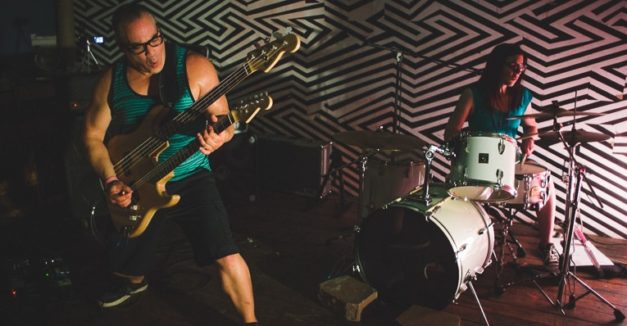Big Al’s Free Music Festival unites musicians to give back
Big Al’s annual genre-diverse concert, food drive and music swamp is back, and aiming to bring musicians together in an art exchange while also giving back to the community.
Lookout Lounge hosts the ninth-annual Big Al’s Free Music (BAMF) Festival tomorrow from 2 p.m. to midnight. The free concert features live performances by Eternal Amnesia, Brother From Another Mother, Jales Hupke, Mike Perry, ARMY of 2600, Mollie Bartlett, Pflames and Damien, Haley Raven, Wagon Blasters, Kyle O’Reilly, Michael M. Saklar, Brenna Grabow, Relax, It’s Science, John Dahlgren, P-tro, Ryan de la Garza and Big Al Band.
Local bands and artists are welcome to bring original recordings to participate in a swap meet with each other and with fans. Though the concert is free, attendees are encouraged to donate canned and dry food to benefit Food Bank of the Heartland.
“Big Al” Hatfield is half of the Big Al Band duo, as well as a fitness instructor and eight-year host of the BAMF festival. The band will have it’s own “Good Vibes” cassettes on hand for exchange, and will headline the event.
See the full schedule and RSVP to the event here.
https://soundcloud.com/big-al-band/great-white-shark
* * *
Halfwit shares two more tracks
After giving the first peek at its new album last week, Lincoln hard rock band Halfwit released two more tracks Wednesday via its Bandcamp page. No word yet on a release date or show, and it might be more likely to drop with warning.
Listen to all three new Halfwit songs below:
* * *
Terrace Martin talks Omaha recording sessions with MTV News
Needing a break from Los Angeles, multi-instrumentalist jazz artist Terrace Martin came to Omaha to record his recent LP Velvet Portraits. He had just played an integral part in both recent Kendrick Lamar records, and felt the Midwest city would provide a peaceful place to create.
“There’s a lot of soulful cats in the Midwest, and Omaha was one of those places that when you go, you can just focus,” Martin told MTV News writer David Turner
Martin recently chatted with Turner about the new record, working with his father, drummer Curly Martin, and more in a recent interview. As the story notes, Martin keyed in the jazz-influenced sound of Lamar’s To Pimp A Butterfly and Untitled Unmastered. In between work on those projects, he started composing for what would eventually comprise Velvet Portraits, part of which he recorded with Make Believe Studios’ Rick Carson.
Read the rest of that Q&A here.
* * *
Tribute 2 Prince at Vega
HN contributor James Dean went to Vega last night for the venue’s tribute to Prince. The legendary musician and songwriter died last week at his Paisley Park estate in Chanhassen, Minnesota after an illustrious, innovative career.
Lincoln musician/producer Lucas Kellison sent us this essay:
Prince and the Midwest
It goes without saying that Prince had innumerable accomplishments, but one of his greatest and least-mentioned accomplishments was staying true to his Midwest roots. By simply looking at his career (not the myth, but the career itself), it becomes more and more obvious that Prince not only found the Midwest to be his comfort and haven, but he found it to be a superior place for his most creative accomplishments to occur. Despite his everlasting mysteriousness, Prince had a familiar, simple work ethic, loyalty to his home, a layered and “humble” politeness (Midwesterners know why I put that word in quotations), and a sound (the Minneapolis sound) that grew organically out of a no-coast tradition.
Willing 2 Do The Work
Prince was 24 when he released 1999. He played every single instrument on the record, which would eventually certify as multi-platinum. All of these are amazing accomplishments, but what is, perhaps, most amazing is that 1999 was Prince’s 5th studio album, and the prior 4 albums were recorded exactly the same way (i.e., by him alone). The commercial success of 1999 allowed Prince to form future bands with some of the greatest musicians in the world, but those first 5 albums—all autonomously played and produced—were the place where Prince put his development as a musician on wax. If one listens to them chronologically, it’s easy to hear the growth in intellectualism and the braveness in experimentation (synths, drum machines through guitar rigs, etc.).
Like many American Dream myths, Prince has often been equated to some sort of breakthrough overnight success story, discovered in a club in Minneapolis. Nothing could be further from the truth. Prince was the hardest working musician in American history. Those first 5 albums created an entirely new sound, and they had to be done by him and him alone before the sound could be translated to other players. While others played a role in developing this sound (it should certainly be noted that Rick James is commercially responsible for much of Prince’s 80s successes after “letting” P and crew upstage him every night on the 1980 Fire It Up tour), Prince put in the time and took all the risk, and history will, therefore, give him the credit as the originator of the Minneapolis sound whether it’s an accurate assessment or not.
By the time Prince’s frontal cortex record, Purple Rain, dropped, a 26-year-old P had fully conceived his brand and vision, accompanied by a homonymous film he insisted be shot in Minneapolis. By now, he was a road-tested, battle-tested live performer, having been sharpened by the likes of the aforementioned Rick James, but also legends Zap and Roger, while simultaneously developing protégés The Time, Vanity 6, Apollonia 6, Shelia E., and Wendy and Lisa, all of whom were Midwesterners (except for James). He had taken the same work ethic required for developing the Minneapolis sound and translated it into being the most disciplined, energetic live performer ever.
He had become Jimi, George, and James; he had become Prince, and he did it methodically, surprisingly privately, and with a farmer’s patience while he harvested his various crops. Only a Midwesterner could see that large of a horizon.
Prince dropped 39 albums.
Uptown
Minneapolis will never get over Prince. There’s no chance of it happening. He is in the blood as much as the blood was in him. Hometowns forget the ones who leave. They never forget the ones who stay or come home after the sabbatical. Though Prince initially headed out to Cali to get the necessary funding for his original deal, his insistence on his home being his haven is beyond admirable.
Prince could’ve cashed in as a producer. His sound defined the 80s and beyond. Warner Bros. gave him autonomy and “allowed” him to have his own Paisley Park label. Yet Prince never actively sought to put anyone on beyond those from his hometown. A couple of his protégés in The Time—Jimmy Jam (Minneapolis) and Terry Lewis (OMAHA)—did cash in, going on to take the Minneapolis sound they grew under Prince and using it to produce the likes of Michael Jackson, Janet Jackson, Usher, George Michael, Mariah Carey, and on and on.
Yet despite the understandable cashing-in efforts of his followers, Prince remained cozy in his Chanhassen Paisley Park complex, working on whatever he wanted and continuing to evolve. Even though he had pop hits, he was always sort of above and away from pop culture. He wrote songs for The Bangles, Alicia Keys, Chaka Khan, Stevie Nicks, Sinead O’Conner, and TLC, but he was never really immersed as a songwriter for others. He hopped in on recording sessions as a guest session player for the likes of George Clinton, Madonna, Kate Bush, Ani Difranco, Stevie Wonder, Common, Bootsy Collins, and Miles Davis (it should be noted that there are tons of rumored Prince guest recordings where he simply didn’t want to be credited—funk goddess Nikka Costa comes to mind), but he was never an ambitious session player beyond his own works. Ultimately, Prince kicked it in Minneapolis because that’s where he came from, and that’s where he could afford to live in a 65,000 square foot personal parallel universe (yet another Midwest win—cost of living!).
Some argue that leaving your hometown to claim a traditional hub is the most difficult route to take (disclaimer: ALL artist routes are difficult). It can certainly be said, however, that Midwest funk pioneers like Prince (MN), The Time (MN), Michael Jackson (IN), Earth, Wind, and Fire (IL), The Deele (Babyface’s band from IN), Stevie Wonder (MI), all the Ohio groups: Ohio Players (Junie Morrison helped create P-Funk too along with Cleveland native Kid Funkdadelic), Lakeside, Dazz Band, Zapp and Roger, Slave, and the Isley Brothers would all, perhaps, disagree. They might argue that it’s easier to hop into something already established and surrounded by cultural enthusiasm rather than create something on a blank canvas no one is paying attention to before exposing it to a hub. They might argue that it is much more difficult to put Gary or Dayton or Minneapolis or Detroit on the map than it is to assimilate oneself into a place someone else already put on the map. It’s hard to say, but the former is certainly less discussed, and Prince is the epitome of painting the blank canvas.
“Cool means being able to hang with yourself.”
Prince is the most eclectic, least-definable genre-bending musician in American history. Why? Because he didn’t have a pre-existing fan base to please. Prince lived in a place and time where no real tradition beyond “Funkytown” existed. As previously mentioned, funk has always been largely a Midwest thing, so that sound was all around Prince, but even the raw 70s funk wasn’t fully appealing in Minneapolis. To be clear, Prince was a funk musician before he was anything else–the funk pocket was the heartbeat of his entire musical career—yet, unlike the funk artists before him who showed no desire to get out of their formula, Prince managed to successfully incorporate psychedelic rock into pop, drum machines into psychedelics, soul into glam, rock into soul, and on and on and on, all with the funkiest pocket imaginable underneath, facilitating the entire tornado. The result, after 5 self-produced albums where Prince played all of the instruments, eventually became its own Prince-genre which was affectionately dubbed “The Minneapolis Sound.”
It is important to note this same story happened in the major hubs—the New York sound, the Nashville sound, the LA sound. At some point, each one of these places had a Prince. New York had Duke. LA had Brian Wilson. Nashville (Bristol) had Ralph Peer. In this cyclical way, Prince is the story of anyone in this country who has created or facilitated art, tradition, or industry where there wasn’t any. He was the beautiful embodiment of our nation’s tragically sloppy and divinely indelible history. He helped us see the future without forgetting to be honest about the past. He created the lasting model for the successful Midwest musical pioneer.
On a personal note, I never have been nor ever will be anything remotely comparable to Prince, but I do know what it’s like to be creative in a space where there was no prior creation, where others doubted me or those close to me abandoned me, where I was uncompromising about my own art and vision, where I didn’t let one instrument define me as a musician, artist, or person, and where breaking through certain ceilings others artificially created for me seemed impossible. Through it all, I had Prince, and by that, I mean I had the knowledge that someone else had done something extremely unlikely and artistic in a place not traditionally encouraging of either, and that I could have my own microcosmic universe if I just worked my ass off and believed. I still believe this for myself and the Nebraska community I am so proud and blessed to be a part of, and as I type this last section with tears welling up, I am beginning to feel the stinging realization that future iconic musical losses will never come close to hurting as much as this one. Thank you, Prince, for your bravery, your path, and your constant search for self-actualization. We will so greatly miss you.
— Lucas Kellison
See Dean’s photos from last night below:
Eli & Carrie Mardock
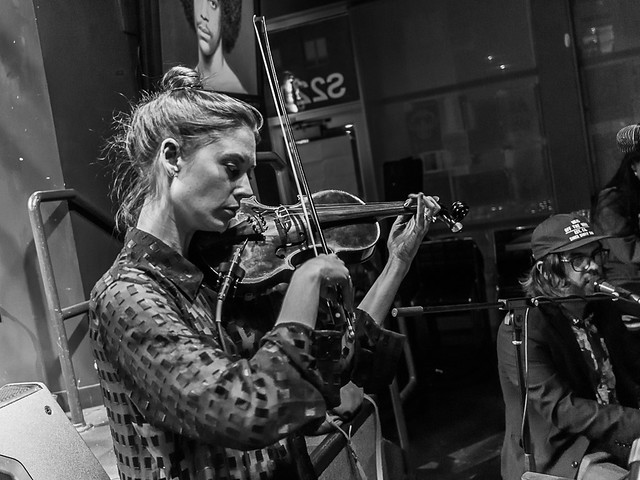

Humland
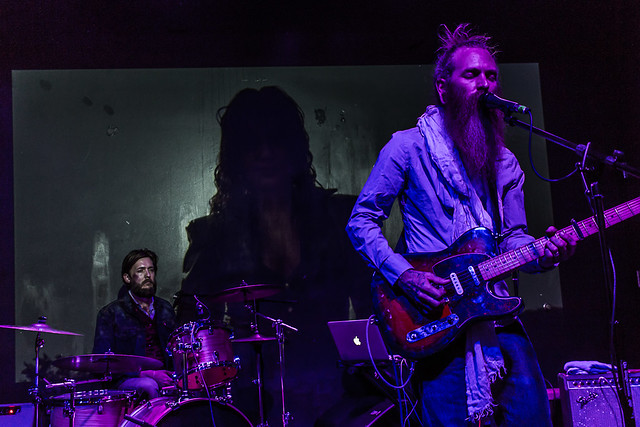
Billy Saffyre
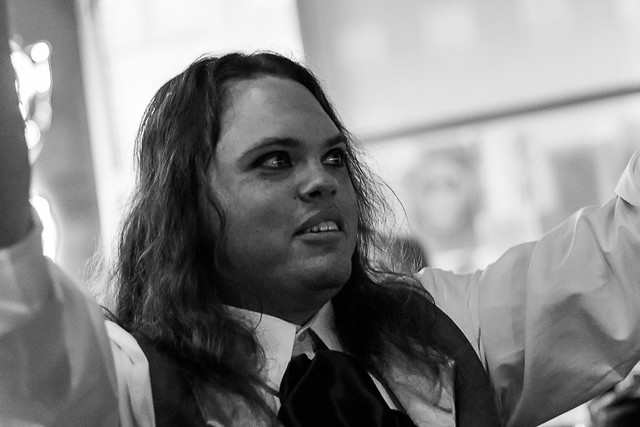
The Hanyaks

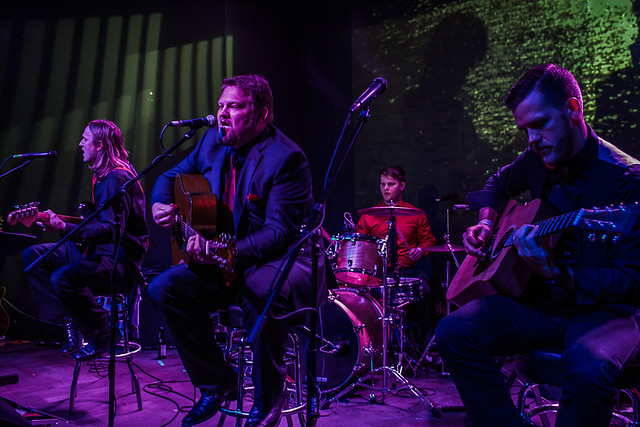
Sam Placzek
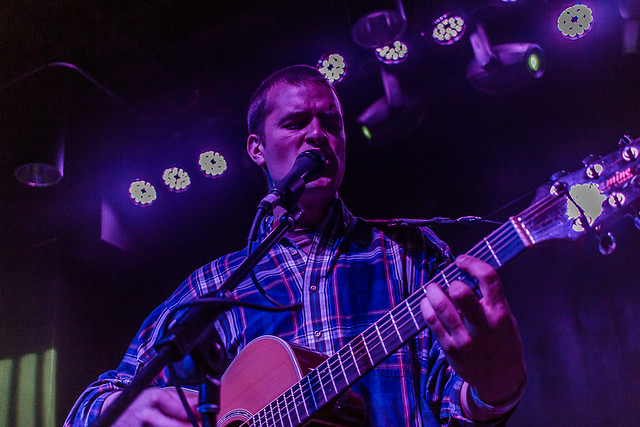
Lucas Kellison

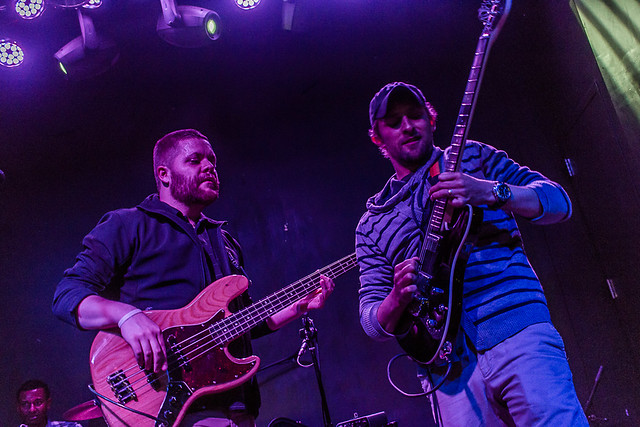
Rock and Roll Suicide
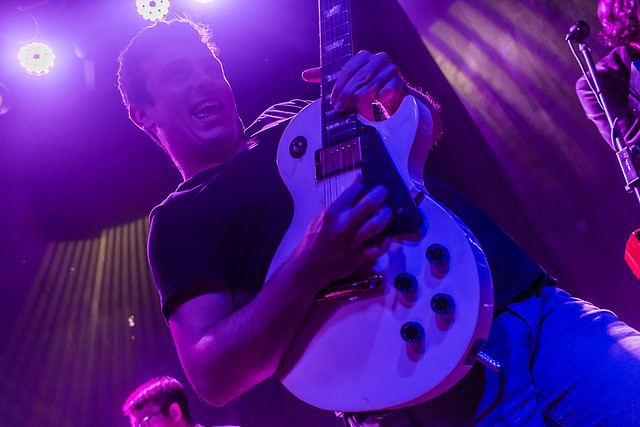

DJ DLUV
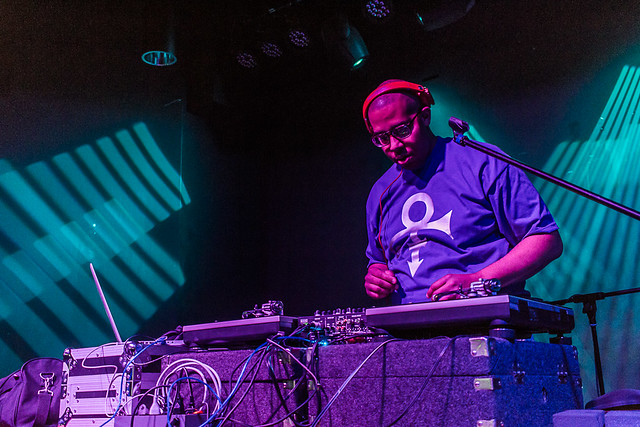
photos by James Dean
* * *
Hear Nebraska this week’s Omaha Storm Chasers ‘Community Organization of the Week’
Before the AAA Omaha Storm Chasers square off against Pacific Coast League division rivals Oklahoma City Dodgers tonight, the team will feature Hear Nebraska as its Community Organization of the Week.
Accordingly, Executive Director Andrew Norman will throw out the ceremonial first pitch, and it’s fair to say our camp is almost equally as excited for this comic relief/gift from the heavens as we are for the game itself. Speculation on location has varied from optimistic to 50-Cent to this (yikes).
In all seriousness, we’re excited and grateful for the honor. Stop by and say hello if you’re at the game, or listen in via 1180 AM The Zone.
* * *
Concert Round-Up
There’s plenty in shows to get to this weekend.
We previewed the debut of Closeness — the dark new electronic project from Orenda and Todd Fink — yesterday in our news section. Read that interview here and RSVP to its first show Saturday (with Thick Paint and Space Bar) here.
Earlier in the week, our On The Record podcast team reviewed Powers’ earth-shaking new record Night Friends. The Lincoln rock quartet releases its first LP tomorrow night at Duffy’s Tavern with Nanahara and Bogusman. Get ready with the podcast below, and RSVP to the show here.
https://soundcloud.com/hearnebraska/otr-powers-night-friends-bounce
Also Saturday, Charlie Ames Project celebrates the release of its debut EP There. The Omaha rock quartet dropped the album earlier this month on Spotify, etc. Ames’ crystal-clear tenor leads a marriage of sharp, crisp rock guitar work and pop piano. Hear the album below, and RSVP to the show (with Lonely Estates and State Disco) here.
The O’Leaver’s beer garden gets a seasonal grand opening Sunday. Haunted Gauntlet (M34n Str33t producer Adam Haug) spins tunes starting at 11 a.m. (with $2 mimosas and PBRs). Later, Des Moines’ Annalibera (Nebraska-native Anna Gebhardt), Haunted Gauntlet, New York avant rockers Iska Dhaaf and Mike Schelsinger and Sean Pratt play a show. $5 entry, RSVP here.
For a fuller listing of this weekend’s shows, head to our statewide calendar here. If you do not see your show or one you plan to attend, leave it in the comments or add it yourself here. Let us know where you’re going via Instagram and Twitter at @hearnebraska. See you out there.




